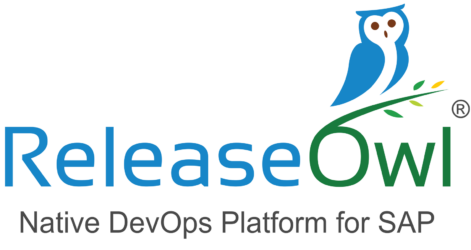SAP BAPI
Filter By
Browse By
- SAP Analytics and AI
- SAP Application Development and Integration
- All SAP Application Development and Integration
- SAP ABAP
- SAP ABAP Development Tools
- SAP ABAP Test Cockpit
- SAP API Management
- SAP BAPI
- SAP Basis
- SAP BRF
- SAP Business Application Studio
- SAP CMS
- SAP Design Studio
- SAP Development Tools
- SAP DevOps
- SAP EAI
- SAP EDI
- SAP Extension Suite
- SAP Fiori
- SAP Fiori Elements
- SAP Integration Suite
- SAP Low Code Application Development
- SAP Low Code Automation
- SAP Netweaver
- SAP Release Management
- SAP UI5
- SAP Web Application Server
- SAP Web IDE
- SAP Business Process Management
- SAP Center of Excellence
- SAP CIO
- SAP Customer Experience
- SAP Data and Data Management
- All SAP Data and Data Management
- SAP BW
- SAP BW/4HANA
- SAP Crystal Reports
- SAP Data Archiving
- SAP Data Center
- SAP Data Governance
- SAP Data Integration
- SAP Data Migration
- SAP Data Quality
- SAP Data Services
- SAP Data Strategy
- SAP Data Visualization
- SAP Data Warehouse Cloud
- SAP DMS
- SAP Document Control
- SAP EIM
- SAP ETL
- SAP ETL Tools
- SAP HANA
- SAP HANA Administration
- SAP HANA Deployment Infrastructure
- SAP HANA Studio
- SAP Master Data
- SAP Master Data Governance
- SAP MDM
- SAP Enterprise Architect
- SAP Enterprise Asset Management
- SAP ERP
- SAP Finance
- All SAP Finance
- SAP Accounting
- SAP AR AP
- SAP Asset Accounting
- SAP Billing Systems
- SAP BPC
- SAP BRIM
- SAP Cash Management
- SAP Central Finance
- SAP Controlling
- SAP COPA
- SAP Cost Center Accounting
- SAP Currency Risk
- SAP e-invoicing
- SAP FICO
- SAP Finance Automation
- SAP Advanced Financial Closing
- SAP Financial Consolidation
- SAP Financial Planning
- SAP FX Risk
- SAP General Ledger
- SAP Global Tax Management
- SAP Hyperion
- SAP Order to Cash
- SAP Payment Processing
- SAP Profitability Analysis
- SAP Rebate Management
- SAP S/4HANA Finance
- SAP SWIFT Compliance
- SAP Treasury Management
- SAP Universal Journal
- SAP Governance Risk and Compliance
- SAP Human Capital Management
- SAP Intelligent Technologies
- SAP Platform and Technology
- All SAP Platform and Technology
- SAP Business Technology Platform
- SAP Cloud
- SAP Cloud Connector
- SAP Cloud Integration Platform
- SAP Cloud Migration
- SAP Cloud Platform
- SAP Cloud Providers
- SAP Cloud Strategy
- SAP Digital Signature
- SAP Container Platform
- SAP HANA Enterprise Cloud
- SAP Digital Asset Management
- SAP Smart Forms
- SAP HEC
- SAP Digital Integration Hub
- SAP Hyperscalers
- SAP Infrastructure
- SAP Messaging
- SAP Quality and Testing
- SAP Security
- SAP Spend Management
- SAP Supply Chain Management
- All SAP Supply Chain Management
- SAP APO
- SAP Asset Management
- SAP Business Network
- SAP Digital Manufacturing Cloud
- SAP Digital Twin
- SAP EWM
- SAP IBP
- SAP Inventory Management
- SAP Label Printing
- SAP Logistics
- SAP Manufacturing
- SAP Manufacturing Automation
- SAP MES
- SAP MII
- SAP MM
- SAP MRO
- SAP MRP
- SAP Order Management
- SAP Plant Maintenance
- SAP PLM
- SAP Production Planning
- SAP S&OP
- SAP SD
- SAP SPM
- SAP Supply Chain Planning
- SAP Track and Trace
- SAP Transportation Management
- SAP System Administration
SAP BAPI, a Tested Way to Integrate with SAP
Interoperability of software applications has become a critical requirement for business processes ever since SAP evolved from being a monolith to becoming the central core of an increasing number of third-party solutions. Many top vendors for specialized business applications offer ways for their software to work in tandem with SAP ECC and SAP Business Suite.
SAP itself has enabled this through its SAP Business Application Programming Interfaces (SAP BAPIs). These are standard interfaces that enable software vendors to integrate their software into SAP Business Suite. In programming terms, a standard BAPI is a Business Object type that encapsulates a set of methods and parameters, with an a “Extension” parameter to pass custom data that is specific to a company. For example, standard BAPI for purchase orders and sales orders can be enhanced.
SAP BAPI, a Tested Way to Integrate with SAP
Interoperability of software applications has become a critical requirement for business processes ever since SAP evolved from being a monolith to becoming the central core of an increasing number of third-party solutions. Many top vendors for specialized business applications offer ways for their software to work in tandem with SAP ECC and SAP Business Suite.
SAP itself has enabled this through its SAP Business Application Programming Interfaces (SAP BAPIs). These are standard interfaces that enable software vendors to integrate their software into SAP Business Suite. In programming terms, a standard BAPI is a Business Object type that encapsulates a set of methods and parameters, with an a “Extension” parameter to pass custom data that is specific to a company. For example, standard BAPI for purchase orders and sales orders can be enhanced.
BAPI Technical Implementation
BAPIs are technically implemented using RFC (Remote Function Call) enabled function modules inside SAP systems. Such a trusted RFC connection allows creation of trusted-trusting relationships between systems, both SAP and non-SAP. BAPIs also can be called through ALE/IDoc (Application Link Enabling/Intermediate Document) technology.
BAPI Integration and SAP Workflow Examples
BAPIs are defined in the Business Object Repository (BOR) as methods of SAP Business Objects that perform specific business tasks. They allow integration at the business level, not technical level. This makes it much easier to find suitable BAPIs compared to non-BAPI-based function modules.
There are different ways in which application developers may integrate workflows:
- Integration of third-party applications with an SAP System.
- Integration of custom business applications with an SAP System.
- Integration of additional SAP components into the SAP system.
- New user interfaces to an SAP System for occasional SAP users.
- Web-based access to an SAP System through Internet or Intranet applications.
- Mobile, cloud or IoT (Internet of Things) access to an SAP system.
Here is one example of how SAP BAPI is used for reporting.
SAP BAPI and the Move to SAP S/4HANA
As many SAP customers move to SAP S/4HANA in the cloud, one of the most vital requirements is to integrate existing or new on-premise applications with SAP S/4HANA. Released BAPIs can be used to connect SAP S/4HANA Cloud with SAP on-premise applications only.
BAPI and Non-SAP Integrations
For other integrations, such as cloud-to-cloud and cloud with non-SAP solutions, SAP recommends using Public APIs which use OData (Open Data Protocol) or SOAP (Simple Object Access Protocol), Business event handling and other SAP Cloud products.
There are many sophisticated ways that SAP solutions can be integrated with other applications. Boomi has an intelligent iPaas (Integration Platform as a Service) with many connectors that seamlessly integrate workflows.
While SAP BAPI has many advantages, SAP customers have to assess the right set of intelligent approaches for their landscape based on their needs.
183 results
-

Transition to Real-Time Analytics on SAP S/4HANA 1610 and SAP BW/4HANA
Reading time: 15 mins
Many companies are planning to make the move to SAP S/4HANA and/or SAP BW/4HANA to take advantage of improved capabilities for real-time reporting. How can you best prepare and execute your transition? Read the Q&A transcript from BI & HANA 2018 speakers and consultants Bill Faison and Colin Hart from Method360 to gain real-world insight…
-

The Basics of Basis Administration
Reading time: 38 mins
Panelists: Deb Donohoe and Christian Baessler, Enowa Date: Wednesday, January 17th Sponsor: Basis & SAP Administration 2018 Read transcript of the chat with Deb Donohoe and Christian Baessler from Syskoplan Reply (formerly Enowa) to get answers to your most pressing questions about Basis administration to ensure your SAP landscape runs smoothly and efficiently. Whether you…
-

 Premium
Premium
SAP Business Connector 4.8 and SAP NetWeaver PI Compared: When to Use Each
Reading time: 18 mins
Understand what integration platforms are and how you use them with SAP systems. Find out the similarities and differences between SAP’s two main integration platforms: SAP Business Connector and SAP NetWeaver Process Integration. Key Concept An integration platform is a server that facilitates data exchange between two (or more) heterogeneous systems, for example, an SAP...…
-
-

 Premium
Premium
Develop Multilevel Approval of Travel Management Workflow
Reading time: 10 mins
Learn how to develop a customized workflow when a travel request needs to be approved from all cost center owners involved in that travel request. The cost center owners are usually the persons responsible for their respective department in an organization. Key Concept Travel Management is a submodule of SAP ERP Human Capital Management. It...…
-

 Premium
Premium
Simplify Your ABAP Data Access to Planning Applications
Reading time: 28 mins
Use the ABAP code in this article to enhance standard function modules in Strategic Enterprise Management Business Planning and Simulation so that you do not have to worry about externally formatted values. Key Concept SAP provides function modules in a function group called UPC_API such as API_SEMBPS_GETDATA and API_SEMBPS_SETDATA to read and write to InfoCubes...…
-

- SAP MII
 Premium
Premium
What You Need to Know About SAP xMII to Enable Adaptive Manufacturing
Reading time: 13 mins
Learn about SAP xApp Manufacturing Integration and Intelligence (xMII) and see how you can use it to improve your manufacturing processes. Through several real-world examples, see how xMII helps your operation monitoring and control, quality management, and manufacturing synchronization. Then, take a look at the technology behind xMII. Key Concept SAP xApp Manufacturing Integration and...…
-

 Premium
Premium
Visual Composer 7.0’s BI Extension Kit Offers New Data Modeling Capabilities
Reading time: 31 mins
Understand what’s new in Visual Composer 7.0. The BI Extension Kit, part of Visual Composer, includes many new design-time and run-time features that allow functional consultants to create analytical applications without coding. Key Concept Visual Composer is a model-driven development tool that allows business experts to create and adapt analytical and free-styled applications without writing...…
-
-

 Premium
Premium
Consolidate Warehouse Operations of Multiple Companies in a 3PL Model
Reading time: 8 mins
In eight steps, learn about extending SAP warehouse management functionality to more than one company, the related design of interfaces from a non-SAP ERP system, and the process flow of inbound/outbound processes. Key Concept To run common warehouse processes in a third-party-logistics-like environment, interfaces with non-SAP ERP systems have to be robust, ensuring integrity of...…
-

 Premium
Premium
The Office Document Toolbox for Creating RTF Documents and Spreadsheet Files Using ABAP: Part 2 — Reading and Writing Excel Documents
Reading time: 88 mins
As an alternative to using the COM interface (which can be cumbersome) for creating Microsoft Word and Excel files in ABAP, you can use the Office Document Toolbox, an open-source solution, to create word processing documents in Rich Text Format (RTF) and spreadsheets in Excel XLS format. Learn how to read and write Excel files...…
-

 Premium
Premium
Enhanced Aggregated Planning and Disaggregation Improves RCCP Planning Accuracy
Reading time: 10 mins
The enhanced aggregated planning business function is for planning high-data volume scenarios in SAP Advanced Planning & Optimization (SAP APO). This function is useful in Retail, Apparel, and Footwear planning scenarios that have many product variants. You can use enhanced aggregated planning to plan at the product group level instead of product level for rough-cut...…
Become a Member
Unlimited access to thousands of resources for SAP-specific expertise that can only be found here.
Become a Partner
Access exclusive SAP insights, expert marketing strategies, and high-value services including research reports, webinars, and buyers' guides, all designed to boost your campaign ROI by up to 50% within the SAP ecosystem.


